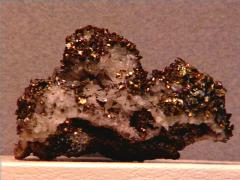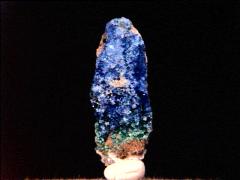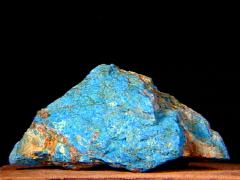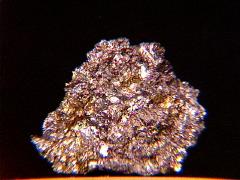This Wednesday morning, January 25th, 2012, the same day that Helicopter Ben announced that The Fed will continue their accomodative ZIRP until 2014, I was watching intently on Netdania as the silver price streamed live. I like to watch a one minute refresh, as it gives me a quick indication of market direction, alerting me to the possibility of an entry point for stock trades that I've referred to, utilizing leveraged ETF's. Silver had finished Monday at $32.20, and then fifteen cents higher the following day.
I was hoping that, if a silver sell-off were to continue, as one might have inferred from overnight weakness, that spot would have drifted down to, say, $31.00. That would have provided enough incentive for me to book a trade, having retraced from a print above $32.50 in previous days. Failing that, I was watching the "witching hour" 10:00am EST, during which the New York trading desks frequently unleash the hounds of short selling, leading to a temporary rout in the silver market precipitating a swift plunge.
Had that occurred, even to the tune of just a near-vertical drop of sixty or seventy cents to $31.30, I would have been convinced that the time was ripe to implement a new position, and would have liquidated shares to pick up more of the Velocity Shares triple-leveraged silver ETF, USLV, thus to initiate another trade as detailed in Triple Dip, Double Run. I watched with mixed emotions as the unfolding tape unveiled a story that defied my expectations.
Instead of a downturn, silver took off. This was shortly after the FOMC made their announcement, and apparently traders found this further admission of accomodative policy implementation to be supportive of a weak dollar policy, and thus a favorable environment for precious metals investment. It turns out silver never hit my target, dropping only to an intraday low of $31.89 before it headed North with a vengeance. At today's bottom USLV could have been purchased at $39.68, had one's timing been perfect. More likely, one would have been fortunate to pick up shares at $39.80.
In anticipation, I had readied one portfolio for liquidation of a few positions. I had been prepared to sell some shares of a few various silver miners. These included my holdings of Pan American Silver (250 shares), a portion of my AGQ (327 shares), as well as my stakes in Fortuna Silver Mines (308 shares), Impact Silver (914 shares), another bloc of Silver Wheaton (319 shares), and my entire position in Tahoe Resources (114 shares). Liquidating these shares would have generated $38,236. Subtracting $56 in trading expenses I could have purchased 959 new shares of USLV at the aforementioned price.
I missed this opportunity because I asked too much of the market, and you don't always get what you want. Had I acknowledged that spot had retraced a respectable amount, and made those sales enabling that purchase, I would have shown a gain, by the end of trading that day, of almost $6,396. Silver went on to rise $1.20, and USLV demonstrated a commensurately healthy triple-leveraged return of 12.44%. But it's simplistic to just say I lost the chance to earn $6,396. We need to examine the performance of the equities I kept more closely.
These surged nicely as well, albeit not with the strength of USLV. At 10:00am EST, had I triggered the trades, AGQ shares were $53.43. They finished the day at $59.39, a gain of 8.23%. Liquidating those shares would have obtained $17471.61 for me. Holding them instead, their value increased to $19,420.53. FSM was $6.10 per share and increased to $6.54, a gain of 6.34%. Selling those would have realized $1878.80. Holding them resulted in a gain to $2,014.32
ISVLF shares would have netted $1.55. Instead, they rose to $1.68, a 5.12% gain. Their sale initially would have raised $1416.70. Their retention resulted in $1,535.32. PAAS shares were worth $21.18 in the morning, but by mid-afternoon they had climbed to $22.37, a gain of 2.38%. They grew in value from $5295.00 to $5592.50. SLW rose from $31.45 to $34.88, a 7.99% gain. Their value increased from $10032.55 to $11126.72. THOEF was the strongest of this handfull, rising from $18.79 per share to $21.01, a hardy gain of 11.57%. Their value rose from $2142.06 to $2395.14.
So what is the point of all this number crunching? Isn't it all just a waste of time? "No," I contend, because sometimes a review of the numbers will elucidate previously unconsidered attributes of the trade not exercised, which can help one to evaluate the potential of possible trade executions in the future. Let's look at what the numbers have to reveal. In a previous article, A Good Parking Place, I promoted the thesis that selecting cash as a place to wait for value buys can be a poor choice.
Some stock market gurus advise never to chase price, to let the stock come back to you, thus never to "buy at market." I would have sold those positions and had a balance of $38,236 with which to buy new shares. But had I followed the premise of never buy at market, and placed a limit buy order, say at $38.60 for 964 shares, the order never would have triggered as, for the remainder of the day, the entry point into USLV became increasingly more costly. Sitting in cash would have cost $6375.96 in opportunity lost.
But what actually did transpire? By retaining the original shares considered for sale, their value increased to $41,991.53, a gain of $3754.81, representative of a 9.61% increase. So the opportunity lost expense was reduced to $2621.15. Reviewing these numbers and analyzing their meaning imparts a message. Triple-leveraged returns on a nice silver up day, can be very robust. I'm talking huge, Jorge!
It's hard to argue with success. Triple Dip, Double Run has very real potential, particularly if you are alert to market movements and can employ the strategy at opportune moments. Today was not even ideal to play the strategy, and yet look at what unfolded. Imagine how much greater the returns can be on days when immense pressure is exerted upon the market to suppress prices, and serendipity allows you the good fortune to make timely trades. Why (pause for effect) you could make a good fortune!
Buy Silver. Buy Gold. Save Copper. Start Now.
Thursday, January 26, 2012
Subscribe to:
Post Comments (Atom)






























































































































































No comments:
Post a Comment